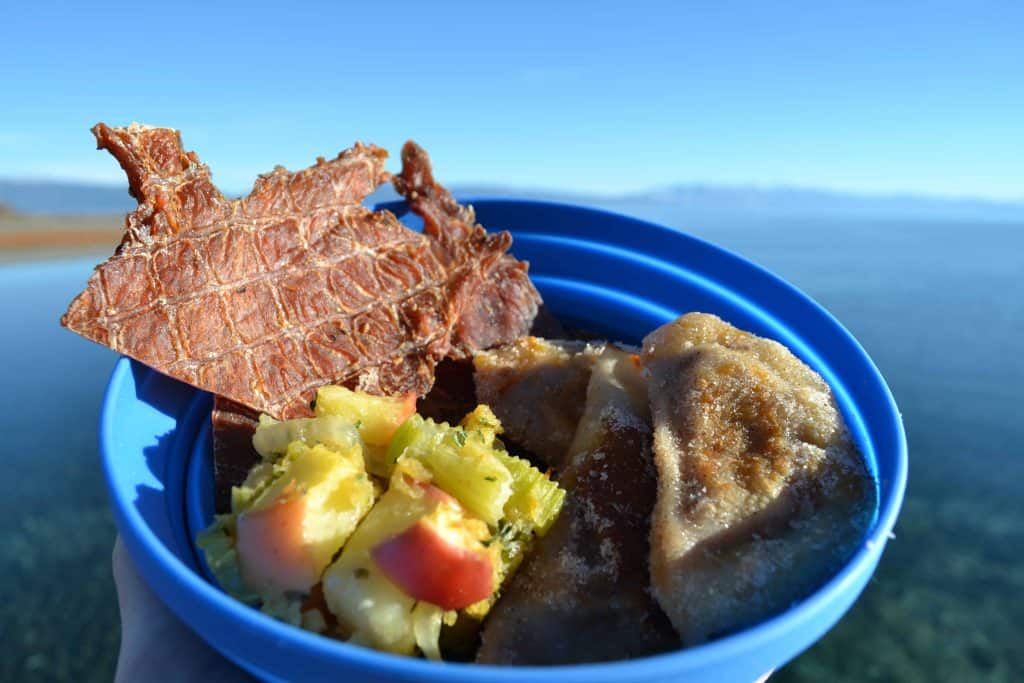Backcountry Nutrition - Part I
Adventure Dining Guide is a culinary web series that takes you out of the kitchen and into the great outdoors. Join Michelle Shea as she hits the trail with professional athletes, chefs, and outdoor enthusiasts to learn how to eat civilized, miles away from civilization.

Planning for an adventure can be a stressful endeavor. Route planning, gear preparation, emergency precautions, and on top of that you have to worry about what to eat when you’re alone in the wilderness for an extended amount of time. When it comes to meal planning there is one goal in mind, pack exactly the right amount of the right kind of food. Not so simple, or is it?
Here are some great tips to help you prepare for your next backcountry adventure:
- Calculate your calories
Knowing the amount of energy your body needs to participate in any outdoor activity is the first step in planning your meals. Don’t forget to factor in weather, because cold weather means your body is burning extra calories to stay warm. There are many resources available to you online, but these are a few of my favorites:
For an in depth understanding of thru hiking nutrition visit this site:
2. Caloric Density
Figuring out the caloric density of foods will help you choose what foods work best for your pack and your caloric needs. Caloric density can be found by dividing a food’s calories by it’s weight.
For example: Olive Oil has 119 calories in 0.5 oz; which means 119/0.5= 238
On the other hand: An Orange has 45 calories and weighs 4.6 oz; 45/4.6= 9.8
These examples show us that lighter, calorie packed foods are going to have more use to a person carrying their food in the wilderness, than a heavy piece of fruit that doesn’t provide as much fuel to the body. Try vitamins or powdered drinks to make up for the orange’s vitamins.

III. Food Pounds Per Person
Prezi put together a fantastic tutorial to help you figure out the amount of food weight each person needs to carry:
Backcountry Nutrition
There are many ways to personalize your nutrition, and there is no one right way that works for everyone. However, this is a general guideline of how many people supplement their diet in the backcountry: 50% Carbohydrates (simple & complex), 30% Fat, 20% Protein, 10% vitamins/minerals
Don’t Forget!
Listed below are items that are easy to forget or overlook but can help make a big difference to your camp kitchen:
- Interchangeable ingredients (ex: coconut oil, hemp seeds, jerky)
- Foods that keep up with you….quick snacks for when you’re moving, meals when you relax.
- Spices, oils and condiments
- Utensils, cutting board, towel, clean-up supplies, ziplock/storage, trash bag, knife
- Spare food for In Case Of Emergency/back-up meals
- Powdered drinks with vitamins, calories, & flavor for treated water
Thank you for checking out the first edition of “Nutrition in the Backcountry”! Be sure to check out Backcountry Nutrition Part II with more great information on food longevity, pack organization, and food prep sanitation.
To check out more of our awesome camp food selection and stock up for your next trip, visit our Amazon store to purchase today!





Leave a comment